Related Research Articles

The Cheyenne are an Indigenous people of the Great Plains. The Cheyenne comprise two Native American tribes, the Só'taeo'o or Só'taétaneo'o and the Tsétsėhéstȧhese ; the tribes merged in the early 19th century. Today, the Cheyenne people are split into two federally recognized nations: the Southern Cheyenne, who are enrolled in the Cheyenne and Arapaho Tribes in Oklahoma, and the Northern Cheyenne, who are enrolled in the Northern Cheyenne Tribe of the Northern Cheyenne Indian Reservation in Montana. The Cheyenne language belongs to the Algonquian language family.
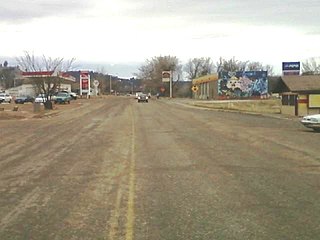
Lame Deer is a census-designated place (CDP) in Rosebud County, Montana, United States. The community is named after Miniconjou Lakota chief Lame Deer, who was killed by the U.S. Army in 1877 under a flag of truce south of the town. It was the site of a trading post from the late 1870s.
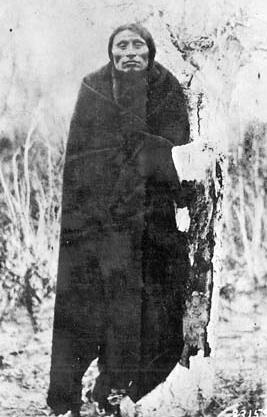
Little Wolf was a Northern Só'taeo'o Chief and Sweet Medicine Chief of the Northern Cheyenne. He was known as a great military tactician and led a dramatic escape from confinement in Oklahoma back to the Northern Cheyenne homeland in 1878, known as the Northern Cheyenne Exodus.
The Dull Knife Fight, or the Battle on the Red Fork, part of the Great Sioux War of 1876, was fought on November 25, 1876, in present-day Johnson County, Wyoming between soldiers and scouts of the United States Army and warriors of the Northern Cheyenne. The battle essentially ended the Northern Cheyennes' ability to continue the fight for their freedom on the Great Plains.
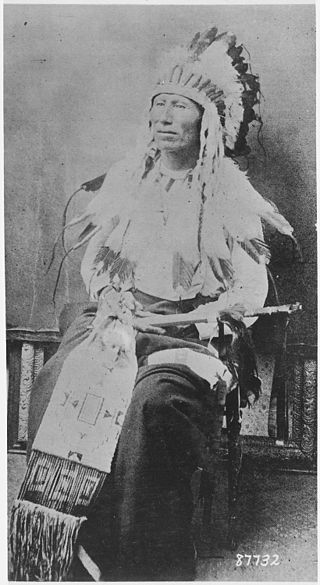
Morning Star was a great chief of the Northern Cheyenne people and headchief of the Notameohmésêhese band on the northern Great Plains during the 19th century. He was noted for his active resistance to westward expansion and the United States federal government. It is due to the courage and determination of Morning Star and other leaders that the Northern Cheyenne still possess a homeland in their traditional country in present-day Montana.

Two Moons, or Ishaynishus, was one of the Cheyenne chiefs who took part in the Battle of the Little Bighorn and other battles against the United States Army.
Cheyenne Autumn is a 1964 American epic Western film starring Richard Widmark, Carroll Baker, James Stewart, and Edward G. Robinson. It tells the story of a factual event, the Northern Cheyenne Exodus of 1878–79, told with artistic license. The film was the last Western directed by John Ford, who proclaimed it an elegy for the Native Americans who had been abused by the U.S. government and misrepresented in numerous of his own films. With a budget of more than $4 million, the film was relatively unsuccessful at the box office and failed to earn a profit for Warner Bros.

The Northern Cheyenne Tribe of the Northern Cheyenne Indian Reservation is the federally recognized Northern Cheyenne tribe and a Plains tribe.
Wooden Leg was a Northern Cheyenne warrior who fought against Custer at the Battle of the Little Big Horn.
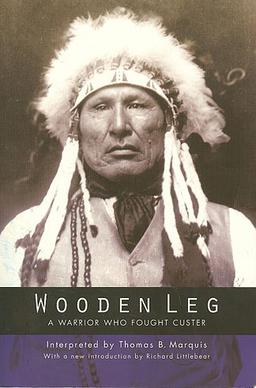
Wooden Leg: A Warrior Who Fought Custer is a 1931 book by Thomas Bailey Marquis about the life of a Northern Cheyenne Indian, Wooden Leg, who fought in several historic battles between United States forces and the Plains Indians, including the Battle of the Little Bighorn, where he faced the troops of George Armstrong Custer. The book is of great value to historians, not only for its eyewitness accounts of battles, but also for its detailed description of the way of life of 19th-century Plains Indians.

Chief Dull Knife College is a public tribal land-grant community college on the Northern Cheyenne Indian Reservation in Lame Deer, Montana. It is an open-admission college with about 141 students. On average, more than half of its graduates move on to four-year colleges.

Cheyenne and Arapaho Indian Reservation were the lands granted the Southern Cheyenne and the Southern Arapaho by the United States under the Medicine Lodge Treaty signed in 1867. The tribes never lived on the land described in the treaty and did not want to.

The Northern Cheyenne Exodus, also known as Dull Knife's Raid, the Cheyenne War, or the Cheyenne Campaign, was the attempt of the Northern Cheyenne to return to the north, after being placed on the Southern Cheyenne reservation in the Indian Territory, and the United States Army operations to stop them. The period lasted from 1878 to 1879.
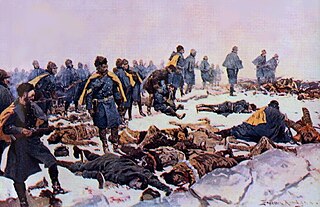
The Fort Robinson breakout or Fort Robinson massacre was the attempted escape of Cheyenne captives from the U.S. army during the winter of 1878-1879 at Fort Robinson in northwestern Nebraska. In 1877, the Cheyenne had been forced to relocate from their homelands on the northern Great Plains south to the Darlington Agency on the Southern Cheyenne Reservation in Indian Territory (Oklahoma). In September 1878, in what is called the Northern Cheyenne Exodus, 353 Northern Cheyenne fled north because of poor conditions on the reservation. In Nebraska, the U.S. Army captured 149 of the Cheyenne, including 46 warriors, and escorted them to Fort Robinson.
John Woodenlegs was a Native American writer, educator, and the tribal president of the Northern Cheyenne from 1955 to 1968. In 1975, he founded Chief Dull Knife College, a community college located in Lame Deer, Montana.
Red Armed Panther, or Red Sleeve, was a Northern Cheyenne Scout at Fort Keogh during the late 1870s. He was brought into the Chiefs Council of Forty-four during the summer of 1864. He actively participated during Chief Little Wolf’s trail back to the homeland, which is now the Northern Cheyenne Reservation located in the south eastern part of Montana. He put his life on the line to save his comrade, Black Horse, during a horse stealing raid. He had a large family growing up, with six sisters and a brother. He had two children, Shell Woman and “Man Bear,” known as John Red Sleeve. The exact date of his death is uncertain, but he died in his home of electrical shock in the Muddy Cluster district on the Northern Cheyenne Reservation.

The Battle of Punished Woman's Fork, also called Battle Canyon, was the last battle between Native Americans (Indians) and the United States Army in the state of Kansas. In the Northern Cheyenne Exodus, 353 Cheyenne, including women and children, fled their reservation in Oklahoma in an attempt to return to their homeland on the northern Great Plains. In Kansas, they fought soldiers of the U.S. Army at Punished Woman's Fork, killing the army commander. After the battle the Cheyenne continued northward. Some were successful in reaching their relatives in Montana. Others were captured or killed near Camp Robinson, Nebraska.

Porcupine was a Cheyenne chief and medicine man. He is best known for bringing the Ghost Dance religion to the Cheyenne. Raised with the Sioux of a Cheyenne mother, he married a Cheyenne himself and became a warrior in the Cheyenne Dog Soldiers.
Marie Elena Brady Sanchez, was an American Cheyenne, Chief Judge of the Northern Cheyenne Tribe, a human rights activist for indigenous people and a linguist.

The Battle of Turkey Springs was the last battle between Native Americans (Indians) and the United States Army in the state of Oklahoma. In the Northern Cheyenne Exodus, 353 Cheyenne Indians, fleeing their reservation in Oklahoma in an attempt to return to their homeland in the northern Great Plains, fought a unit of the United States Army, killing three soldiers. After the battle the Cheyenne continued northward skirmishing with the army along the way. Some were successful in reaching their relatives in Montana. Others were captured or killed near Camp Robinson, Nebraska.
References
- ↑ Powers, Ramon and Leiker, James N. (September 13, 2012). "The Northern Cheyenne Exodus in History and Memory". University of Oklahoma Press. ISBN 9780806188485 . Retrieved June 2, 2019.
{{cite news}}: CS1 maint: multiple names: authors list (link) ISBN 0806185902 - ↑ MovieJourneys (March 17, 2014). "Cheyenne Autumn (1964)". MovieJourneys.com. Archived from the original on June 27, 2019. Retrieved June 2, 2019.
- ↑ Nickerson, Gregory (Summer 2017). "All-American Indian Days and the Miss Indian America Pageant" (PDF). Gregory Nickerson Files at The Magazine of Western History. Retrieved June 2, 2019.
- ↑ Baker, Paul Wake (May 18, 2014). "Cheyenne Autumn". PaulWakeBaker.com. Retrieved June 2, 2019.
- ↑ Various (July 18, 2006). "Cheyenne Autumn (John Ford, 1964)". Criterion Forum. Retrieved June 2, 2019.